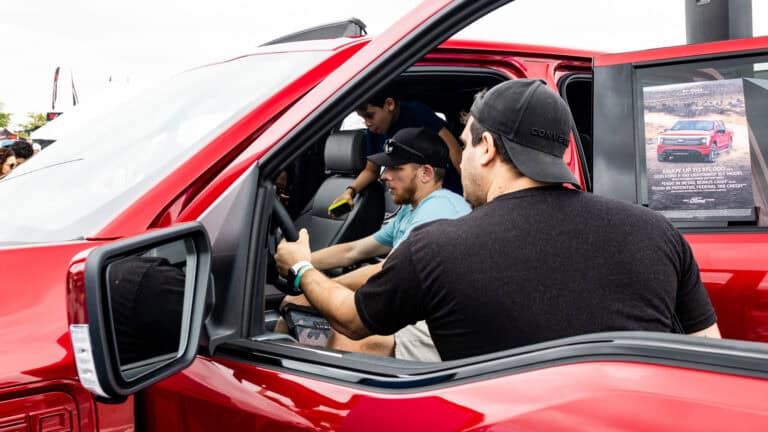- Tesla has won close to 13% of NEVI charging infrastructure awards.
- Experience, relationships, and sheer scale help keep Tesla’s costs low when building their EV charger network.
- Tesla’s NACS connectors will become commonplace thanks to a new agreed-upon standard, and many EV owners will benefit as a result.
Tesla has a huge cost advantage when it comes to building an EV charger network. Other advantages loom large as well, however. On the deployment side, Tesla has the EV charger installation relationships and teams in place that other companies lack and which will take years to duplicate, Loren McDonald, CEO of EVAdoption, told Electrify News in an interview.
ADVERTISEMENT
Tesla’s Growing Impact Thanks to Smart Funding

Those strengths have helped Tesla win close to 13% of the Federal Highway Administration’s National Electric Vehicle Infrastructure, or NEVI, awards to the tune of more than $17 million.
While those advantages may mean that Tesla will be the dominant builder of the entire EV ecosystem in the U.S. for decades, that isn’t necessarily a bad thing.
“There probably is a negative, but fundamentally there doesn’t seem to be any near-term obvious negative,” McDonald said.
Tesla will likely end up building around 2/3 of the entire fast charging network in the U.S., McDonald said, but the other startups will continue to build out, as well, offering choices.
“In a couple of years, there will be [a fast charger] on every corner,” he said. “Where now you have one choice, you may have four or five choices. I don’t see Tesla having monopolistic power.”
To be sure, the cost to build a Tesla charging station is remarkably lower than other companies. Federal aid in the form of an EV tax credit has very little to do with that cost advantage, however, McDonald said. Tesla is unlikely to build many charging stations in the low-income or non-urban areas that qualify for the tax credit, and in any case other automakers have access to the same benefit, he said. Other factors created the cost advantage.
ADVERTISEMENT
EVAdoption figures Tesla’s DC fast charging hardware can cost up to 50% less than the competition because the automaker is producing at a much larger scale than anyone else. Tesla deployed 5,700 superchargers in the U.S. last year; the next highest was 1,000, McDonald said.
Having those economies of scale means Tesla’s cost of buying components and materials is significantly lower. Also, Tesla produces other EV-related products that may share some parts with an EV charger, allowing it to leverage the cost across product lines, he said.
Tesla also manufactures its own charging station hardware and is able record it as an internal company transfer and a cost of doing business, McDonald added. “Tesla employs Superchargers to sell more cars,” he said.
That was an astounding bit of foresight on Tesla’s part. As an article in the Harvard Business Review says, while legacy automakers were concentrating on perfecting their electric vehicles, Tesla was “thinking about the entire vehicle system, with the aim of solving consumers’ core driving needs.”
ADVERTISEMENT
SAE J3400 Becoming the Standard EV Charger Port

Soon most EV owners will enjoy the benefit of Tesla’s foresight. Its charging stations, with their NACS, or SAE J3400 ports, are already accessible to owners of some other manufacturers’ EVs with the use of a dongle. That number will soon be much larger, as manufacturers will include a NACS connector on their next model year EVs, along with the CCS connector.
The Federal Highway Administration has modified the NEVI EV charging station installation guidelines to include NACS ports so long as CCS ports are also present.
That won’t diminish Tesla’s overall advantage in terms of cost and numbers, however.
“I don’t ever see anybody catching up to them unless Tesla just decides they are done with building infrastructure,” McDonald said.
Given the high reliability of the Tesla fast charger network and the fact Tesla fast charging stations tend to have twice as many ports as others, that isn’t terrible.
ADVERTISEMENT

FEATURE IMAGE: ALYSHA WEBB
FTC: We use income-earning auto affiliate links. Learn more.











